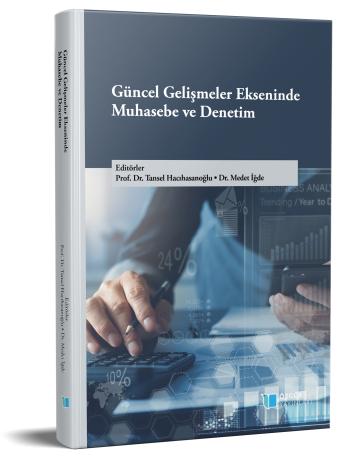
21. Yüz Yılda Dijital Denetim ve Dijital İkiz: Dijital Denetimin İşletmelere Olan Yansımaları Ve Dijital İkiz Üzerine Bir Değerlendirme
Şu kitabın bölümü:
Hacıhasanoğlu,
T.
&
İğde,
M.
(eds.)
2023.
Güncel Gelişmeler Ekseninde Muhasebe ve Denetim.
Özet
Özellikle son sanayi devriminin etkisi ile işletmelerin üretim modelleri dijitalleşmeye doğru bir evrim geçirdiği görülmektedir. İlk sanayi devriminin etkisi ile seri üretime geçişin başlaması ile beraber son sanayi devrimi olan Endüstri 4.0’la birlikte ise başta üretim bantları olmak üzere işletme içerisindeki diğer departmanlarda da teknolojik gelişmelerin yoğun bir şekilde kullanıldığı bir alana dönüşmüştür (Lenka, vd., 2017: 92-93). Bu değişim ve dönüşüm sonucunda işletmelerin üretim, lojistik, pazarlama, ar-ge, muhasebe vb. birçok departmanlarındaki iş yapış şekillerinde değişiklikler söz konusu olduğu gözlemlenmektedir. Gerçekleşen bu iş yapış değişikliklerine ek olarak işletmelerin hukuki alt yapılarında da sınır tanımaksızın farklılıklar oluştuğu değerlendirilmektedir. İşletmelerin üretim aşamalarında yaşadıkları yenilikler ile hukuki durumları ve halka açıklık oranlarında gözle görülür belirgin oranda artışların olduğu görülmektedir. Böylelikle, işletmelerin hukuki yapıları değişikliğe uğrayarak, çok uluslu yapılarına ek olarak dijital yeniliklerin eklenmesi ile beraber işletmelerdeki finansal tabloların oluşturulması ve buna bağlı olarak oluşturulan bu tabloların şeffaf bir şekilde denetlenmesi günümüzde önemini her geçen gün daha da artırarak koruduğu düşünülmektedir. İşletme içi ortaklık yapılarında artışların olması her ortağında hak kayıplarının korunmasının önemini de arttırmıştır. Bu bakımdan halka açıklık oranı yüksek şirketlerin denetim süreçleri halka açık olmayan şirketlere göre daha fazla önem kazanmıştır

